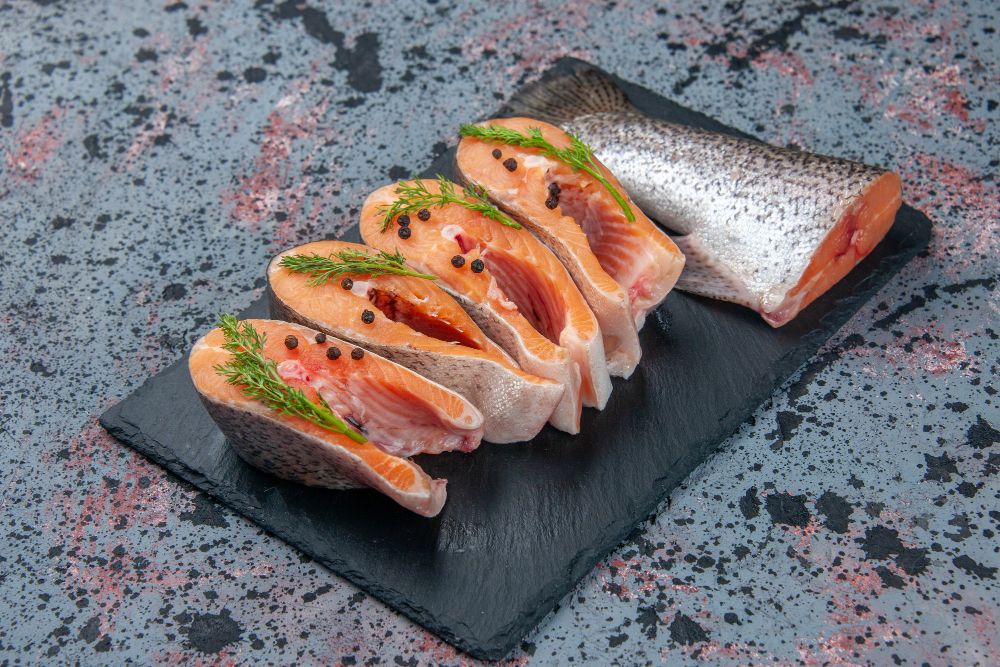
Author: Natalie Ng|Updated: 9 May 2025
Learn how to use carb cycling for weight loss, fat burning, and muscle retention. This practical guide covers high vs low carb days, insulin sensitivity, and how to align your eating plan with real results.

Introduction
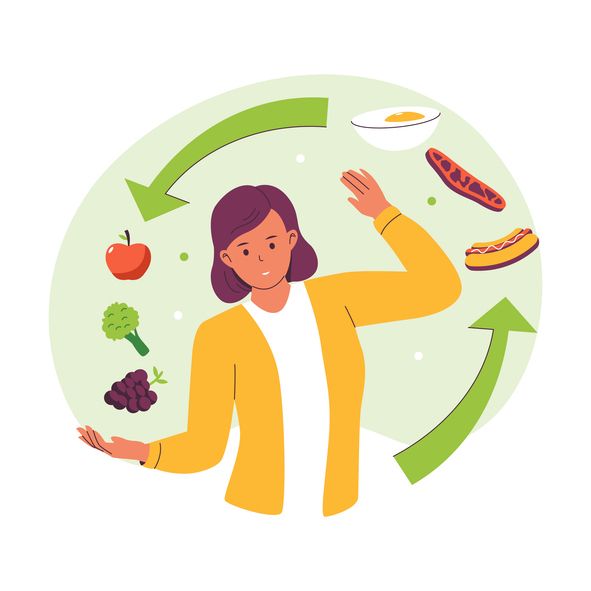
Carb cycling is a simple eating method. It changes how many carbohydrates you eat based on the day. Some days you eat more carbs. Other days you eat less. This routine helps support fat loss, protect muscle mass, and balance energy levels.
This guide explains how carb cycling works, how to plan your meals, and how it may help you lose weight in a consistent and realistic way. It uses plain language to describe how to apply carbohydrate periodisation for your weight loss goals, without overcomplicating the science.
What Is Carb Cycling?
Carb cycling means changing your carbohydrate intake throughout the week. You split your days into high carb days, moderate carb days, and low carb days.
• On high carb days, you eat more carbs. This gives your body energy for intense workouts and helps refill muscle glycogen.
• On low carb days, you reduce carbs. This helps your body burn fat as a fuel source.
• On moderate carb days, you balance your intake. These are often used when your activity level is average.
This method can work for people who want to lose fat, improve insulin sensitivity, and support metabolic health.

Why Carb Cycling Helps With Weight Loss
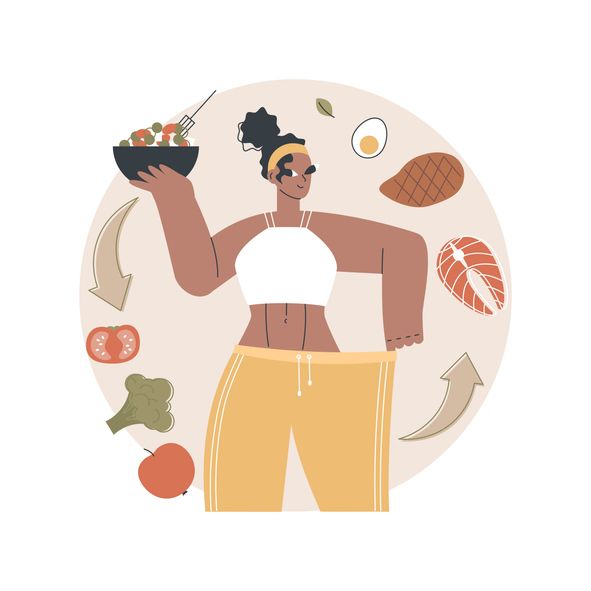
1. It Matches Energy With Activity
Your body doesn't need the same amount of energy every day. On days when you do intense workouts, your muscles use more energy from carbohydrates. This is when high carb intake helps refill muscle glycogen and supports performance.
On rest days or light activity days, you don’t need as much energy. Lowering your carb intake on these days encourages your body to burn fat instead of storing it. This shift supports fat loss while keeping energy intake in line with output.
2. It Helps Avoid Constant Low Energy
Cutting carbs too much can make you tired. Many people who try strict low carb or no carb diets struggle with low energy, poor focus, and mood swings.
With carb cycling, you eat more carbs on the days you need them. This keeps your energy levels stable, especially when you're doing high intensity exercise. You avoid the crashes that come with long-term carb restriction, which makes the plan easier to follow.
3. It Protects Your Muscles
When your body doesn’t get enough fuel, it may start to break down muscle tissue to make up for the energy shortfall. This slows down your metabolism and works against your weight loss goals.
High carb days in a carb cycling diet help protect your muscle mass by restoring glycogen and giving your body enough calories to support recovery. Paired with steady protein intake, this can reduce the risk of muscle breakdown while promoting fat loss.
4. It Can Improve How Your Body Uses Insulin
Insulin sensitivity is your body’s ability to use carbohydrates efficiently. If your body becomes resistant to insulin due to frequent spikes in blood sugar, it can lead to weight gain and higher fat storage.
Carb cycling lowers the demand for insulin on low carb days, giving your system a break. Over time, this pattern can help improve insulin sensitivity, meaning your body manages carbs better and stores less fat. This supports better metabolic health and keeps blood sugar in a healthy range.
Read More
Book Now to Experience
S6 Body Sculpting Treatment
1 Minute Self-Registration
Date should not be before minimal date

How to Build a Simple Carb Cycling Meal Plan
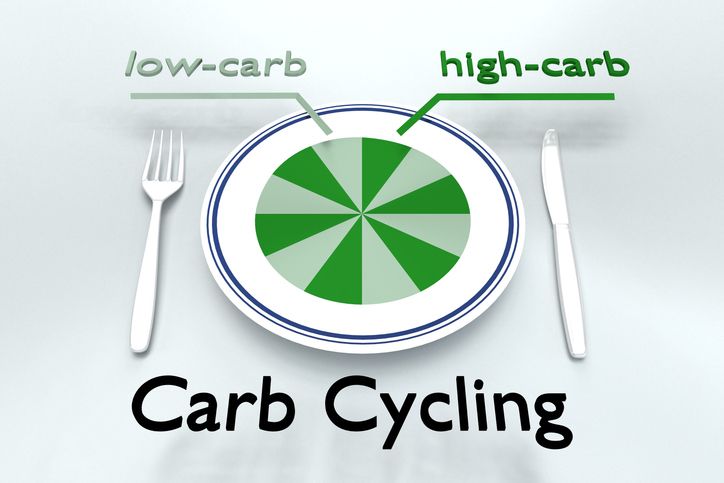
Creating a carb cycling meal plan is straightforward. You plan how many carbs you eat each day based on your workout schedule and daily activity. This guide shows you how to set up high carb, low carb, and moderate carb days using real foods.
1. Pick Your High Carb Days
Choose two to three days each week for high carb intake. These should match your most intense workouts, such as strength training or long cardio. The purpose is to give your body energy and refill muscle glycogen.
What to eat on high carb days:
• brown rice
• sweet potatoes
• whole wheat bread
• quinoa
• oats
• fruit
• whole grains
Keep your protein intake steady. Lower your fat intake a little to make room for more carbs. Focus on complex carbs, and avoid refined carbs and added sugars.
2. Set Your Low Carb Days
Use two to three rest days or low activity days for low carb intake. This helps your body burn fat for energy, instead of relying on carbs.
What to eat on low carb days:
• leafy greens like spinach or kale
• green beans
• zucchini
• broccoli
• eggs
• chicken breast
• salmon
• olive oil
• avocado
Avoid starchy foods like bread or pasta. Build meals around lean protein and healthy fats to stay full and keep your blood sugar stable.
3. Add Moderate Carb Days (Optional)
If you don’t train hard every day, or want more balance, include one or two moderate carb days. These are helpful for moderate activity or light training.
What to eat on moderate carb days:
• a small serving of brown rice
• one slice of whole wheat bread
• one or two servings of fruit
• moderate amounts of protein and fat
Moderate carbs help prevent fatigue without slowing fat loss.
4. Structure a Weekly Schedule
Here is a basic weekly structure for the average active person:
Monday – heavy workout – high carb
Tuesday – light cardio – moderate carb
Wednesday – rest – low carb
Thursday – heavy workout – high carb
Friday – medium workout – moderate carb
Saturday – rest – low carb
Sunday – walk or stretch – low carb
You can adjust this based on your own workout routine and body composition goals. The aim is to give your body more carbs when it needs energy and reduce carbs when it doesn’t.

Example Meals for Carb Cycling
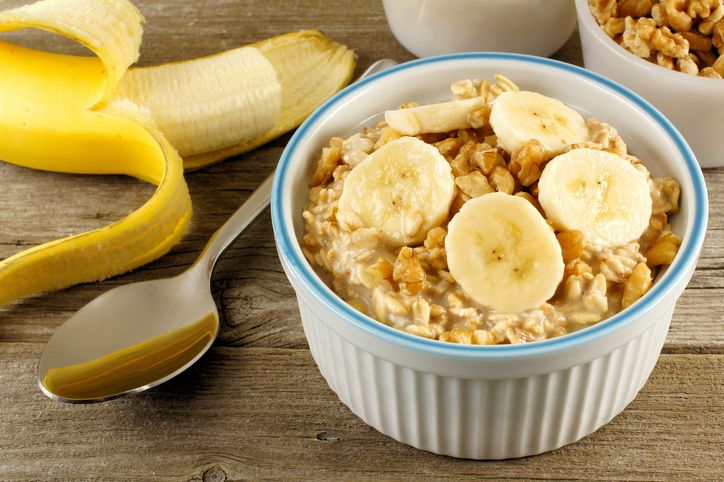
Below are meal ideas for each type of carb day. These meals use simple ingredients and support your goal to lose fat, maintain muscle, and keep your energy steady.
1. High Carb Day Meals
Breakfast
- Oatmeal with banana and a boiled egg
- Green tea or black coffee
Lunch
- Grilled chicken
- Brown rice
- Steamed green beans
Snack
- Protein shake with a slice of whole wheat bread
Dinner
- Baked salmon
- Quinoa
- Roasted carrots and leafy greens
Tip: Keep fats low on high carb days so your total calories stay in the right range.
2. Low Carb Day Meals
Breakfast
- Scrambled eggs with spinach
- Avocado slices
Lunch
- Grilled turkey or chicken breast
- Zucchini noodles
- Olive oil dressing
Snack
- Boiled egg with a few almonds
Dinner
- Pan-fried tofu or fish
- Roasted cauliflower
- Green beans
Tip: Drink water with meals and focus on fiber and healthy fats to stay full.
3. Moderate Carb Day Meals
Breakfast
- Plain Greek yogurt with berries
- Chia seeds
Lunch
- Stir-fried tofu with brown rice (small portion)
- Steamed broccoli
Snack
- Boiled egg or protein shake
Dinner
- Grilled fish
- Sweet potato (small)
- Leafy greens
Book Now to Experience
S6 Body Sculpting Treatment
1 Minute Self-Registration
Date should not be before minimal date

Common Mistakes to Avoid in Carb Cycling
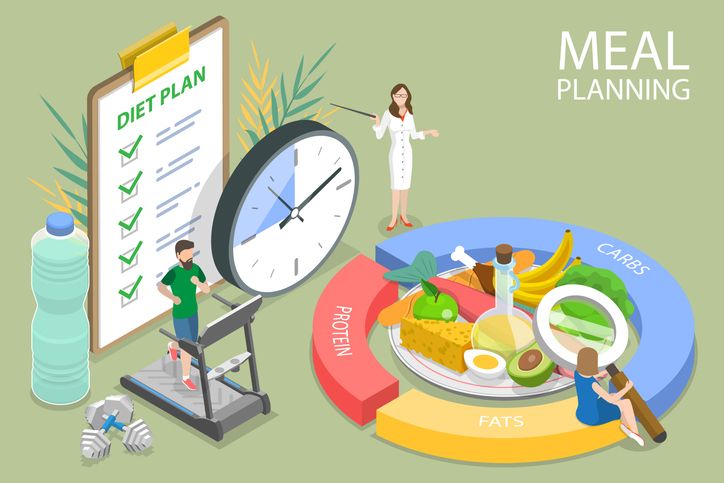
1. Eating Too Many Refined Carbs
Not all carbs have the same effect on your body. If you fill your high carb days with white bread, pastries, or sweet drinks, your blood sugar will spike and crash quickly. These foods don’t keep you full and they encourage fat storage. They also don’t offer much nutrition.
Instead, use complex carbs. These digest slowly, keep your energy stable, and support better insulin response. Choose options like brown rice, oats, sweet potatoes, quinoa, and whole wheat bread. These carbs support better fat loss and performance without adding empty calories.
2. Ignoring Your Fat and Protein Intake
Many people focus only on carbs when cycling, but your protein and fat levels matter too. On low carb days, your body still needs energy. If you don’t add enough healthy fat, you may feel weak, tired, or hungry. Fats like olive oil, nuts, seeds, and avocado provide calories that don’t spike your blood sugar.
Protein is important every day. It helps prevent muscle breakdown, supports recovery, and keeps you full. You should keep your protein intake steady no matter how many carbs you eat that day. This helps protect your lean muscle while you lose fat.
3. Using the Same Plan Every Week
Your body isn’t a machine. Your energy needs can change from week to week. If you stick to the same cycle without adjusting, you might eat more than you need or not enough. This can lead to fatigue or slow results.
Some weeks you may train harder and need more high carb days. Other weeks you may be more inactive and benefit from extra low carb days. Pay attention to how you feel, how you perform during workouts, and how your weight changes. Adjust your carb cycle to match.
4. Skipping Meals on Low Carb Days
On low carb days, your meals are already smaller because you’re cutting out a main energy source. If you also skip meals, you might not eat enough to support your body. This can lead to low energy, cravings, and muscle loss. Your metabolism may slow down, and your workouts can suffer.
Instead of skipping meals, build them around protein and healthy fats. Include things like eggs, chicken, olive oil, and vegetables. These meals will keep your body fuelled and help you stay consistent without overloading on carbs.
5. Not Drinking Enough Water
Carbs help your body hold on to water. When you lower your carb intake, your body loses some of that water. This is why people often lose a few pounds quickly at the start of a low carb diet. It’s mostly water weight.
If you don’t replace that fluid, you might feel tired, dizzy, or bloated. Drink plenty of water, especially on low carb days. You can also eat foods with a high water content like cucumber or zucchini. Staying hydrated helps your digestion, keeps your energy steady, and supports weight loss.

Who Should and Shouldn’t Use Carb Cycling
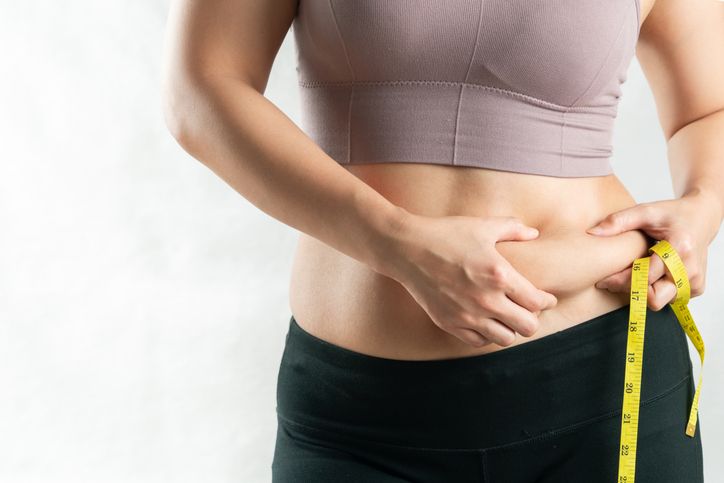
Carb cycling can help with weight loss, energy balance, and muscle maintenance — but it’s not the best approach for everyone. Before starting, it’s important to know who this method works well for, and who should avoid it or speak with a doctor first.
1. People Who May Benefit from Carb Cycling
Active individuals or athletes
If you train multiple times per week or do high-intensity exercise, carb cycling can support your energy needs on workout days and promote fat loss on recovery days. It helps manage body composition while supporting performance.
People trying to lose fat without losing muscle
Carb cycling lets you reduce fat while keeping carbs in your diet when you need them most. This helps protect muscle, especially when paired with regular resistance training and steady protein intake.
Those with a regular workout schedule
If you follow a structured workout plan with intense and light days, carb cycling allows you to adjust your fuel based on demand. This helps keep your energy stable while supporting long-term fat loss.
People who struggle with strict low carb diets
Many people feel tired or unmotivated on long-term low carb plans. Carb cycling offers more flexibility. You still reduce carbs on certain days, but you don’t have to give them up completely.
2. People Who Should Avoid or Be Cautious
People with diabetes or blood sugar issues
Carb cycling changes your daily carbohydrate intake, which may affect blood sugar levels. If you have diabetes, insulin resistance, or use medication that impacts blood sugar, speak to a healthcare provider first.
Anyone with a history of disordered eating
Carb cycling involves planning and tracking what you eat. For some people, this can increase stress or unhealthy food behaviors. If you have a history of binge eating, restriction, or food obsession, this method may not be safe.
Pregnant or breastfeeding women
Your body needs steady energy and nutrients during pregnancy and breastfeeding. Changing your carb intake each day may affect energy levels or milk supply. It’s best to follow a consistent, balanced diet during these times unless your doctor says otherwise.
People with existing health conditions
If you have thyroid issues, hormone imbalances, or other chronic conditions, changes in carb intake could affect your metabolism or medication needs. Always check with your doctor before starting a new eating plan.

Boost Your Carb Cycling Results with S6 Body Sculpting Treatment
If you follow a carb cycling meal plan and want faster, more visible changes, S6 Body Sculpting Treatment can help. While carb cycling adjusts your carbohydrate intake to burn fat and maintain muscle, the S6 treatment works on areas where stubborn fat stays — even when your diet and workouts are consistent.
What Is S6 Body Sculpting Treatment?
S6 Body Sculpting is a non-surgical body contouring treatment. It uses low-energy bio-laser technology to break down fat cells under the skin. A vacuum suction device is also used to massage the area, which supports lymphatic drainage and helps remove the released fatty acids through your natural metabolic process.
This treatment targets seven body areas where fat is often hard to lose: belly, waist, thighs, arms, back, calves, and lower buttocks. It is suitable for both men and women who want to improve body shape without surgery or long recovery time.
How It Works
1. A beauty consultant starts by assessing your body shape and fat distribution. This helps customise the treatment for your goals.
2. A probe is placed on the treatment area. The bio-laser energy reaches the subcutaneous fat and breaks down fat cells by triggering the release of fatty acids.
3. A vacuum suction massage follows, which supports lymphatic drainage and boosts circulation.
The laser also encourages collagen production, helping to keep the skin firm while fat is reduced.
How It Supports Carb Cycling
Carb cycling helps your body burn fat more efficiently by adjusting your high carb and low carb days. On low carb days, your body is already in a fat-burning state. The S6 Body Sculpting Treatment supports this process by breaking down fat in specific areas, speeding up visible results in hard-to-target zones like the lower belly or thighs.
It also boosts your metabolic rate with every session, which works well with the improved insulin sensitivity and fat loss goals of a carb cycling diet.
This combination — a smart eating plan and targeted fat reduction — helps improve overall body composition faster than diet alone.
Advantages of S6 Body Sculpting Treatment
• Non-invasive, with no surgery or injections
• Minimal or no downtime
• Targets stubborn fat in key body areas
• Supports skin firmness through collagen stimulation
• Safe for most body types and lifestyles
• Works alongside your eating plan and workout schedule
If you’ve started carb cycling and want to take your fat loss results further, book a consultation for S6 Body Sculpting Treatment. Support your diet with a treatment that targets the stubborn fat your meals and workouts can’t reach — and start seeing real changes in less time.
New Beauty's S6 Body Sculpting TreatmentBook Now to Experience
S6 Body Sculpting Treatment
1 Minute Self-Registration
Date should not be before minimal date
FAQ
1. Can I do carb cycling without exercising?
Yes, you can follow a carb cycling diet even without regular workouts. Carb cycling adjusts your carbohydrate intake depending on your activity level, so you can still use it to manage your weight and support fat loss. On low carb days, your body will rely more on stored fat for energy. However, combining carb cycling with movement or light exercise will give better results, especially in supporting metabolism and preserving muscle mass.
2. Is carb cycling safe for long-term weight management?
Carb cycling can be safe for long-term use if it is done in a balanced and realistic way. Unlike strict no carb or high carb diets, carb cycling includes a variety of foods and flexible meal planning. It supports fat loss while helping you avoid extreme calorie deficits. People with health conditions like diabetes, hormonal disorders, or metabolic syndrome should speak to a healthcare provider before starting, especially if they plan to follow it over several months.
3. How does insulin resistance affect carb cycling results?
People with insulin resistance may find carb cycling helpful because the low carb days reduce insulin spikes and help improve insulin sensitivity. This can make the body more efficient at using carbohydrates on high carb days. That said, it may take longer for someone with insulin resistance to see results, especially if blood sugar control is not stable. Pairing carb cycling with non-invasive fat reduction treatments, such as the S6 Body Sculpting Treatment, can help improve body composition more visibly.
4. Are there signs that my carb intake needs to be adjusted?
Yes. If you feel low on energy during workouts, experience cravings on low carb days, or are not seeing any fat loss after a few weeks, your carb levels may need adjustment. Some people may need more complex carbs like brown rice or whole grains on moderate activity days to stay full and avoid fatigue. Others may need longer low carb periods to kickstart fat burning. Tracking your progress and adjusting your eating plan weekly is key to making carb cycling work.
5. Can I still eat healthy fats while carb cycling?
Yes, healthy fats like olive oil, avocado, seeds, and nuts play an important role in a carb cycling meal plan, especially on low carb days. When your carbohydrate intake is low, your body needs fats to maintain energy and support hormone function. You can include healthy fats with protein-rich meals to feel satisfied, especially when avoiding high carbohydrate foods. Just keep in mind that fat is calorie-dense, so portion control is important if your goal is fat loss.
Recommended Articles
COPYRIGHT© NEW BEAUTY MANAGEMENT LIMITED 2025. ALL RIGHT RESERVED.




